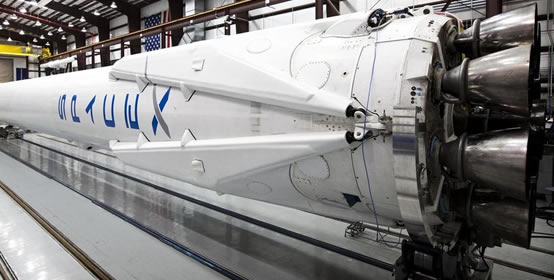
During the early hours of September 1, 2016, a SpaceX rocket exploded on the launch pad. The blast destroyed the Falcon 9 rocket, which was in preparation for a static fire test of the engines. Before the incident, the rocket was set to launch an AMOS-6 satellite into orbit around the earth. The explosion resulted in a total loss of the rocket, but caused no injuries or deaths.
In the days since the explosion, various experts and conspiracy theorists have offered theories as to the cause. Eyewitness accounts vary; one Cape Canaveral employee was quoted in “Business Insider” as saying that the explosion originated near the center of the rocket. Space policy researcher John M. Logsdon disagreed, however, stating that the initial flame appeared closer to the payload.
Because the explosion occurred before the static fire test, while fuel was being pumped into the rocket, some analysts argue that the problem likely originated with the fuel delivery system or the fuel itself. The Falcon 9 rocket uses both rocket-grade kerosene and liquid oxygen as propellant; under the wrong conditions, both can be highly volatile. A simple mechanical issue, such as a tiny hole in a fuel hose, may have caused a dangerous and explosive leak. Another potential issue is a malfunction with the ignition system. Yet another possibility lies with the fuel itself. Contaminants in either fuel may have changed the flash point, increasing the likelihood of explosion or fire.
Analysts state that any of these problems, no matter how small, could be a possible cause of the Falcon 9 disaster. After all, a 2015 SpaceX explosion happened when simple two-foot steel strut failed; the Challenger space shuttle exploded after an O-ring seal failed.
The fuel-delivery system is just one small part of the complex systems that support the Falcon 9 launch pad; any failure in those systems may have set off a domino effect that culminated in the explosion. Charles Miller of NExGen Space LLC told “The Verge” that the problem could relate to nearly any piece of equipment, including the ground support machines.
As with any space-related disaster, the SpaceX explosion has also prompted a variety of conspiracy theories. On one YouTube video of the incident, a small dark spot flies across the screen before the explosion, prompting speculation among Internet uers. Some theorists claim that the dark spot was a drone sent to shoot the rocket or set off explosive devices. Based on camera angles and the relative size of the object, however, experts agree that the dark spot is more likely to be a bird than a UFO or a drone.
An official ruling on the explosion has yet to be released. SpaceX is currently investigating the incident; as of September 2, the company stated that its initial review points to a problem that started near the upper stage liquid oxygen tank. The SpaceX team is conducting its research under the guidance of several government agencies, including NASA and the Federal Aviation Administration. The process requires a slow and painstaking analysis of video feeds and telemetry data from more than 3,000 different channels. According to SpaceX, the data in question was collected in less than 55 milliseconds. On its website, the company announced plans to publish updates, “to the fullest extent we can share publicly.”
In addition to the costs, vehicle loss and launch pad damage, the SpaceX rocket explosion has far-reaching effects in the aerospace industry. Before SpaceX can resume launches, it must repair the launch pad, complete its investigation and reassure the FAA that it has fixed the cause of the problem. This means that the company's customers, which include NASA and Iridium Communications, are likely to see delays in satellite launches and deliveries to the International Space Station. Currently, the extent of the delays is unknown.
What's more, the accident calls into question SpaceX's readiness to pursue launches with human passengers. As a result, United Launch Alliance, SpaceX's main competitor, may have a clearer path to manned spaceflight.
Until SpaceX and the FAA complete the investigation into the Falcon 9 explosion, the general public is left to speculate on the cause. Whether it was an accidental malfunction or a more sinister drone attack, the incident is likely to have ramifications for businesses across the spaceflight industry.